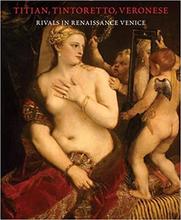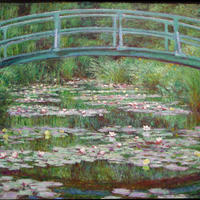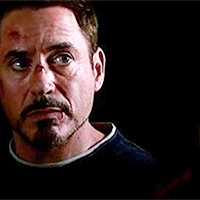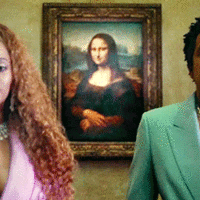More about Paolo Veronese
- All
- Info
- Shop
Works by Paolo Veronese

Sr. Contributor
Paolo Veronese is basically the source material for Joe Pesci's character in "My Cousin Vinny."
Paolo painted a Last Supper scene that the Inquisition felt had irreverent details. Going so far as to call Paolo's artistic flourishes 'buffooneries!' Here's what Paolo depicted that got the Inquisition so hot and bothered: dogs, a guy with a parrot, someone with a bloody nose, a single cat, Germans, and midgets. Really though, I think we can all agree that midgets are implied throughout the entire Bible. In any case, Paolo defended himself pretty unevenly. At first, by saying that Jesus wouldn't go to a party that weren't poppin' with domestic animals and Deutsche people. But then he started to crack under pressure, saying that the Inquisition needed to learn how to take a joke and that it was way better for him to paint an awesome dog than a crappy Mary Magdalene #truestory.
The Inquisition wanted a Magdalene in place of the dog, and all the Germans (read: Protestants) excised from the painting. But Paolo figured all that would be a ton of work, and opted to just rename it Feast in the House of Levi. And everyone lived happily ever after. Monty Python used this incident as fuel for a sketch between Michelangelo and the Pope in which the pontiff takes issue with a Last Supper by the artist with 28 disciples and a kangaroo. The Pope wants what he wants, no more than 12 disciples and zero marsupials. So, Michelangelo asks to rename it the Penultimate Supper.
Paolo was much better at art than being a fancy, big city lawyer. His CV is quite impressive. Titian presented him with a bling-tastic gold chain for his work on the Biblioteca Marciana. He's basically the guy responsible for decorating the Doge's Palace, San Sebastiano, the Villa di Maser, and a bunch of other buildings around the Veneto. Delacroix and Cezanne thought Paolo's use of color and form was like... woah! And thus he serves as one of the main reasons we have impressionism. Today, one of Paolo's paintings is pretty much the best selling Christmas card available from Britain's National Gallery.
Featured Content
Here is what Wikipedia says about Paolo Veronese
Paolo Caliari (1528 – 19 April 1588), known as Paolo Veronese (/ˌvɛrəˈneɪzeɪ, -zi/ VERR-ə-NAY-zay, -zee,
US also /-eɪsi/ -see;
Italian: [ˈpaːolo veroˈneːze, -eːse]), was an Italian Renaissance painter based in Venice, known for extremely large history paintings of religion and mythology, such as The Wedding at Cana (1563) and The Feast in the House of Levi (1573). Included with Titian, a generation older, and Tintoretto, a decade senior, Veronese is one of the "great trio that dominated Venetian painting of the cinquecento" and the Late Renaissance in the 16th century. Known as a supreme colorist, and after an early period with Mannerism, Paolo Veronese developed a naturalist style of painting, influenced by Titian.

His most famous works are elaborate narrative cycles, executed in a dramatic and colorful style, full of majestic architectural settings and glittering pageantry. His large paintings of biblical feasts, crowded with figures, painted for the refectories of monasteries in Venice and Verona are especially famous, and he was also the leading Venetian painter of ceilings. Most of these works remain in situ, or at least in Venice, and his representation in most museums is mainly composed of smaller works such as portraits that do not always show him at his best or most typical.
He has always been appreciated for "the chromatic brilliance of his palette, the splendor and sensibility of his brushwork, the aristocratic elegance of his figures, and the magnificence of his spectacle", but his work has been felt "not to permit expression of the profound, the human, or the sublime", and of the "great trio" he has often been the least appreciated by modern criticism. Nonetheless, "many of the greatest artists ... may be counted among his admirers, including Rubens, Watteau, Tiepolo, Delacroix, and Renoir".
Check out the full Wikipedia article about Paolo Veronese




















